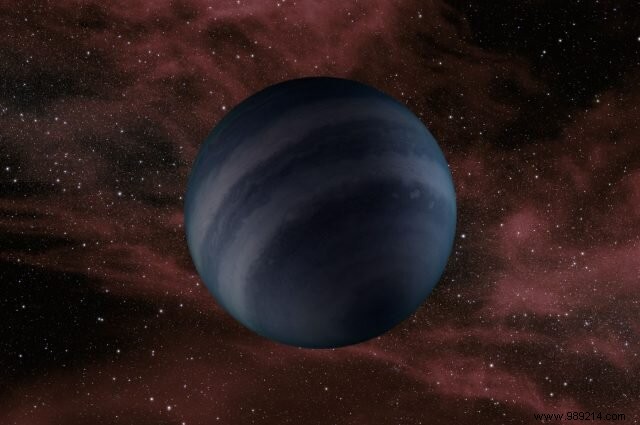In the incredibly distant future, the explosion of a still hypothetical object could well seal the fate of our Universe.
The Big Freeze is one of the possible fates of the universe. The laws of physics as we know them suggest that in the very distant future, no more stars can be formed. The galaxies will then become dark and the black holes will eventually evaporate. Eventually, the temperature of the universe will finally approach absolute zero, thus confirming its thermal death.
"It will be a bit of a sad, lonely, cold place" , explains theoretical physicist Matt Caplan of Illinois State University. Nevertheless, this announced end might not be the end, after all. The physicist was indeed interested in the future, in this universe, of still hypothetical objects.
In the universe, massive stars end their lives in supernova explosions. These occur when internal nuclear reactions begin to produce iron in the nucleus. And iron, unlike other elements, cannot be burned by stars. It then accumulates in the nuclei like a poison, eventually triggering the star's collapse.
For their part, less massive stars, such as the Sun, bow out with a little more discretion. They lose their outer shells to eventually shrink and become white dwarfs. Primarily made of light elements like carbon and oxygen, these objects are the size of the Earth, but contain about as much mass as the Sun.
The theorist then suggests that as white dwarfs cool over the next few trillion years, they will become increasingly dim, eventually turning into "black dwarf" stars that will no longer shine.
However, that won't stop. The Caplan hypothesis, roughly, proposes that over long periods of time, quantum mechanics would allow particles to cross energy barriers, ultimately allowing nuclear fusion reactions.
"These items will only be ashes, but fusion reactions may still occur “, explains the researcher. "It just takes a lot longer “.

This new work, accepted for publication by Monthly Notices of the Royal Astronomical Society, theorizes as well as black dwarfs whose mass is between 1.2 and 1.4 times mass of our Sun could eventually collapse in on themselves and end their lives in a supernova-like explosion. According to the specialist, about a billion billion stars can expect to die this way. As for the others (the less massive), they will remain black dwarfs.
According to Matt Caplan, these black dwarf explosions could start by 10 1100 years . However, it is difficult to estimate such a duration. "It's incredibly far in the future “, writes the researcher.
By the time these items explode, the universe will already be unrecognizable. "The galaxies will have already dispersed and the black holes will have evaporated" , notes the researcher. These explosions will thus be carried out with the utmost discretion.
Caplan also calculates that the most massive black dwarfs will explode first, followed by the less massive ones, until only one remains. According to him, this last supernova explosion of a black dwarf could take place in 10 32000 year. At this point, the universe can then, according to him, be considered truly dead and silent.
"It's hard to imagine anything after this, this supernova could be the last interesting thing to happen in the universe . “, concludes the physicist. "It will probably be the last supernova ever" .